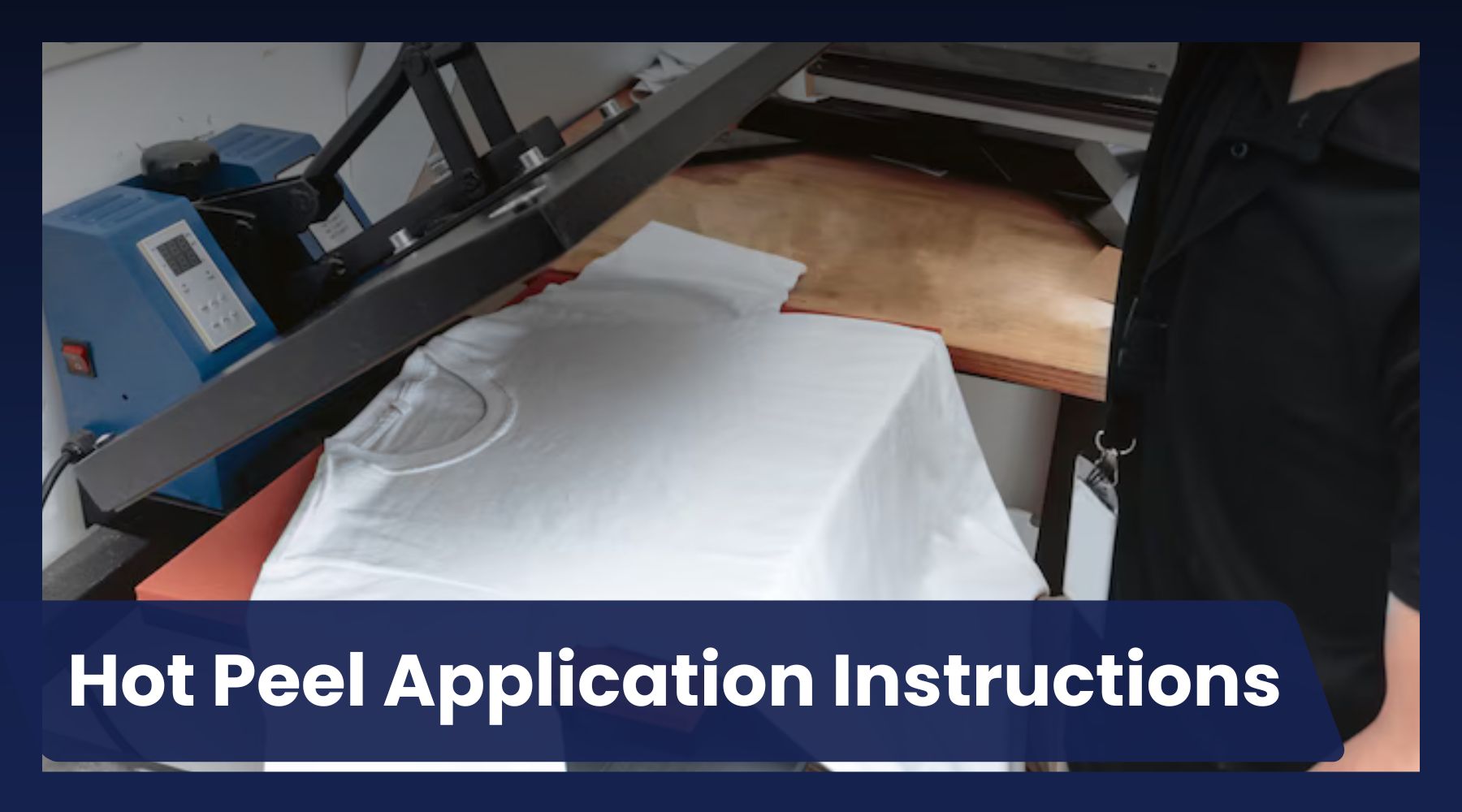Mastering hot peel transfers is essential for achieving top-quality prints with DTF (Direct-to-Film) technology. Whether you're new to DTF or seeking to improve your technique, understanding hot peel application methods can significantly enhance your results.
This blog explores everything you need to know about hot peel transfers, from selecting the right transfer paper to mastering application temperatures.
Understanding Hot Peel Transfers
Hot peel transfers are a technique where the transfer paper is removed immediately after heat pressing while it's still hot. This utilizes the heat's immediate adhesion properties to bond the design onto fabrics effectively. This method ensures seamless integration of designs, resulting in enhanced durability and vibrant colors. By peeling off the paper promptly, it helps in achieving sharper and clearer prints on various substrates. Mastering this technique is crucial for achieving professional-quality results in Direct-to-Film (DTF) printing applications.
Selecting the Right Transfer Paper
Selecting the right transfer paper is crucial for successful hot peel heat transfers. High-quality papers ensure strong adhesion of designs to substrates and retain vibrant colors post-application. Look for papers specifically designed for hot peel transfers, as they are formulated to release cleanly and efficiently at higher temperatures. This choice not only enhances the durability of your prints but also ensures that your designs stand out with sharpness and clarity. Investing in quality transfer papers is key to achieving professional-grade results in DTF printing applications.
Read More: Can You Put DTF Prints on Hats?
Application Temperatures for Hot Peel Transfers
Optimal Temperature Settings
Set your heat press to 300-315 degrees Fahrenheit for cotton and cotton/polyester blends. Adjust temperatures slightly for different fabric types to avoid issues like insufficient adhesion or fabric scorching.
Common Hot Peel Transfer Problems
Peeling Difficulties
Peeling difficulties arise when the transfer paper is not peeled immediately after heat pressing while the fabric is still warm. Delayed peeling can cause the adhesive to cool down and solidify, leading to poor adhesion and potentially affecting the longevity of the transfer. It's crucial to peel the paper promptly to ensure that the adhesive bonds effectively with the fabric, securing the design in place.
Temperature Control
Temperature control is another critical factor in hot peel transfers. Consistency in heat press settings throughout the entire application process is essential to maintain the quality of the transfer. Fluctuations in temperature can result in uneven adhesion of the design or inconsistencies in color transfer. It's recommended to monitor and adjust the heat press settings as needed to ensure that the specified temperature range is maintained consistently, optimizing the bonding process and preserving the integrity of the print.
Step-by-Step Guide to Applying Hot Peel DTF
- Prepare Your Design: Adjust your design for printing on hot peel transfer paper.
- Heat Press Setup:
- Preheat: Set your heat press to the recommended temperature.
- Positioning: Place the fabric on the heat press, ensuring it's flat and free of wrinkles.
- Position and Press:
- Application: Position the transfer paper on the fabric with the printed side facing down.
- Pressing: Apply firm, even pressure using the heat press for 10-13 seconds.
- Immediate Peeling:
- Peeling Process: Peel the transfer paper immediately after the pressing time elapses. This method ensures the design adheres seamlessly to the fabric.
Also Read: How to Cold Peel DTF Transfers?
Mastering hot peel application techniques is key to enhancing the quality and durability of your DTF transfers. By selecting the right transfer paper, maintaining optimal temperature settings, and following precise application methods, you can achieve vibrant, long-lasting prints. Experiment with different fabrics and designs to refine your technique and unlock the full potential of hot peel transfers.
For more detailed guidance on hot peel transfers and to explore our range of DTF solutions, visit DTFNC today.
FAQs
1- How to apply hot peel DTF?
Follow the step-by-step guide provided above. Peel the transfer paper immediately after heat pressing for best results.
2- How do you peel heat transfer?
Peel the heat transfer paper immediately after pressing while the fabric is warm to ensure proper adhesion.
3- Do you peel DTF hot or cold?
Hot peel transfers require immediate peeling after heat pressing, utilizing the heat for optimal adhesion. Cold peel transfers are peeled once the fabric cools down.
4- Do you need a heat press for DTF transfers?
Yes, a heat press is essential for applying for DTF transfers as it provides consistent heat and pressure, crucial for achieving professional-quality prints.








